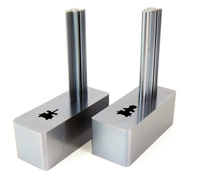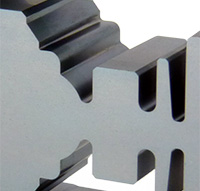Serving the pressing and stamping industry
With analysts predicting continued demand for stamped and pressed components, fuelled by increasing growth in the automotive, electronics and telecommunications markets, it all sounds like promising news for the stamping and pressing companies.
To match such increases in demand, press manufacturers such as Bruderer, Minster and Kyori have continue to develop presses with ever increasing stamping capabilities, with the likes of Bruderer’s BSTA 200 and BSTA 280 presses now capable of producing 2,000 stamps per minute.
However, such increases in stamping speeds and constant calls for the utmost level of dimensional accuracy places unprecedented demands upon the punches and dies to operate to new and untold levels of performance that have previously never before been attained.
Although advances have been made in tool steels materials, it’s somewhat fair to say that the recent pace of equipment capabilities has oustripped the capacity of tooling materials. And what is gained in one direction is lost in another as increases in stamping speeds leads to more frequent tool maintenance stoppages.
Tooling has become the ‘achilles heel’ in the stamping process and in order to maximise the true potential of high speed stamping an improvement in tool life is necessary in order to balance the equation.
Refmet Ceramics Advanced Composite Structure sets the standard in optimising punch and die insert life by minimising tool wear and maximising press availability and has become a major factor towards increasing productivity, maintaining dimensional accuracy and significantly reducing tool expenditure.
Learn more:
 Stamping Tools
Significant lifetime improvements for progression stamping tools used on Bruderer and Minster high speed presses.
Stamping Tools
Significant lifetime improvements for progression stamping tools used on Bruderer and Minster high speed presses.
 Advanced Composite Structure
A new generation of PVD coating technology eliminating wear, pick-up and galling.
Advanced Composite Structure
A new generation of PVD coating technology eliminating wear, pick-up and galling.
 Industries
Aerospace, motorsport, stamping, medical, vacuum, plastic moulding, sciences and many more available.
Industries
Aerospace, motorsport, stamping, medical, vacuum, plastic moulding, sciences and many more available. Contact
Contact our engineers to see how Refmet can provide a solution to your wear and friction issues.
Contact
Contact our engineers to see how Refmet can provide a solution to your wear and friction issues.



